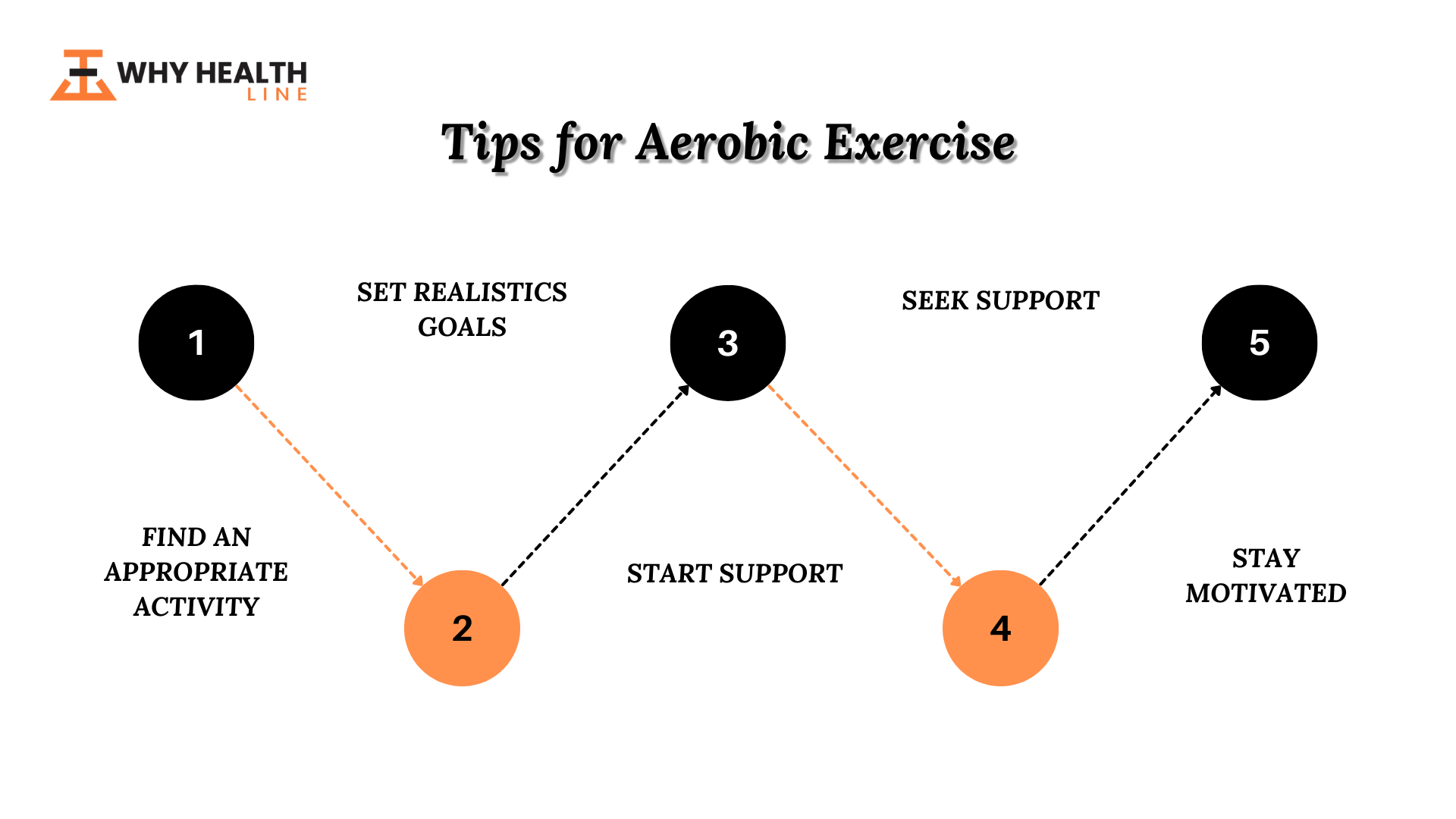Aerobic exercise is a form of physical activity that can benefit a person’s overall health and well-being. It is defined as any sustained, rhythmic activity that increases the heart and breathing rates for a sustained period.
It can be performed in various ways and is essential for a healthy lifestyle. Regular aerobic exercises can help improve cardiovascular health, reduce stress, increase energy levels, and promote weight loss.
This type of exercise also increases the body’s ability to take in, transport, and utilize oxygen, which makes it a form of cardiovascular activity. Additionally, it can help improve mental health by reducing feelings of depression, anxiety, and stress.
This blog post will discuss the benefits of aerobic exercises, and we hope that by the end of this post, you will be inspired to start incorporating aerobic exercises into your lifestyle.
Types of Aerobic Activities
Aerobic exercise also referred to as “cardio” or cardiovascular exercise, is a form of physical activity that increases the body’s oxygen intake and heart rate. This exercise improves cardiovascular health and is usually done at a moderate to vigorous intensity.
There are two main types of aerobic exercise: steady-state and interval training. Steady-state aerobic exercise is a continuous, lower-intensity activity usually done for more extended periods.
Examples of this type of exercise usually include walking, jogging, and swimming. However, aerobic exercises can be tailored to individual fitness levels.
Health Benefits of Aerobic Exercise
It is one of the most effective forms of improving overall health. Research shows that regular aerobic activity can have many positive health benefits, including reduced risk of chronic illnesses such as heart disease, stroke, type 2 diabetes, and certain types of cancer.
Regular aerobic activity can also help increase bone density, enhance sleep quality, and boost your immune system. These health benefits can be achieved by doing 30 minutes of moderate-intensity aerobic exercise 3 to 4 days a week.
Tips for Starting an Aerobic Exercise Regimen
Here are four tips to help you get started:
-
Find an Appropriate Activity:
Running, swimming, and cycling are all great aerobic activities. It is essential to find an activity that you enjoy, and that fits your lifestyle.
-
Set Realistic Goals:
It is essential to set realistic and achievable goals. Set a manageable goal in the beginning, and start with something easy.
-
Start Slowly:
Only jump into an exercise routine at a time. Start with a few minutes of activity and gradually increase the time and intensity.
-
Seek Support:
It may be helpful to seek out a friend or a group to keep you motivated. Having someone to exercise with can make the activity more enjoyable and make it easier to stick with your routine.
-
Create a Plan:
Create a proper plan before starting aerobic exercises. Decide the type of exercise, its frequency, duration, and intensity.
-
Measure Progress:
Track your progress by recording how long, far, or many reps you complete.
-
Stay Motivated:
Reward yourself for meeting achievable goals and adjust your plan when necessary. Also, try to consult with a trained professional if you need guidance or assistance.
Proper Format for Aerobic Exercises
Proper format is essential to ensure that aerobic exercise is effective and safe.
- Ensure that your body is in a straight line, with your chest slightly lifted, your abs engaged, and your chin parallel to the floor.
- Keep your arms and legs loose but engaged and your elbows and knees slightly bent.
- Make sure you keep your feet hip-width apart and your weight evenly distributed on both feet.
Additionally, when jumping, make sure to land softly and quietly to avoid impact on the joints.
Common Mistakes To Avoid When Participating In Aerobic Exercise
Running, swimming, and biking has many physical and mental health benefits. However, if done incorrectly, it can result in injuries.
Here are a few common mistakes to avoid when participating in aerobic exercise:
-
Not Warming Up and Cooling Down:
Warming up and cooling down are essential for preparing and recovering your body for exercise.
-
Ignoring Proper Form:
Incorrect forms can lead to injury, so research and practice the appropriate format for your exercise.
-
Failing To Rest:
Recovery is essential after any exercise; ensure your body has adequate time to rest.
-
Doing The Same Thing:
Doing the same workout every time can get boring, but it can also lead to plateaus in progress.
-
Poor Nutrition:
Fueling your body is essential for performing your best.
-
Not Tracking Progress:
Keeping track of your progress helps you stay motivated.
In Summary:
It effectively helps improve your overall physical and mental health. Therefore, finding an aerobic exercise routine that fits your lifestyle and goals is essential, and with the right attitude and commitment, anyone can benefit from it.
FAQs
What Are the Examples of Aerobic Exercise?
Aerobic exercise includes running, swimming, cycling, dancing, and walking. Aerobic exercise aims to increase cardiorespiratory endurance, burn calories, and improve overall health.
Does Aerobic Exercise Burn Fat?
Yes, it is an effective way to burn off body fat because this physical activity causes your muscles to burn glucose, and it is considered the best type of exercise for weight loss.
However, the duration of these aerobic exercises needs to last longer than a few minutes in order to kick in the fat-burning process.
Is It Right to Do Aerobic Exercises Every Day?
It can be performed every day, depending on its duration and intensity. But the daily workout is generally recommended for competitive athletes or fitness trainers.
If you are doing this physical activity for weight loss, you can give your body a little rest and can perform these exercises 3 or 4 times a week.



